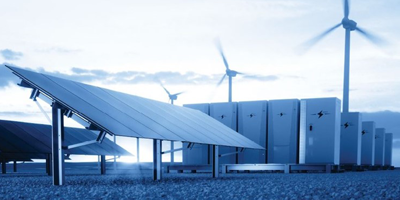20 November 2024
INtegration of POWer ELectronics
The INPOWEL project focuses on modeling, performance and limitation analysis of various grid-forming assets, their interactions and required mitigation measures
Elia’s Proactive Approach to System Stability and System Interactions
In the rapidly evolving landscape of energy transmission, Elia finds itself at the forefront of addressing emerging challenges in grid stability. As we transition towards a more sustainable energy future, the increasing penetration of power electronic (PE) converters and the decommissioning of synchronous generators (SGs) are fundamentally altering the dynamics of our power systems. This shift brings with it new complexities, particularly in terms of voltage sensitivity and system stability. Today, we're excited to share an update on our innovative efforts to ensure the reliability and resilience of our grid in the face of these changes.
The Challenge: A System at Its Limits
The transition to renewable energy sources, while crucial for our sustainable future, introduces new challenges to grid stability. With more PE converters and fewer SGs, our grid is becoming increasingly sensitive to voltage fluctuations and is operating closer to its stability limits. This new reality raises the risk of component interactions that could lead to poorly damped or even undamped oscillations – a phenomenon we term "system interactions." These oscillatory phenomena, if not properly managed, can escalate and lead to significant issues, including the risk of blackouts as reported in various real-world oscillation events associated with PEs. In view of this, stability definition and classification are extended to include PE-driven stability issues, as shown in Fig. 1.
Fig 1. Extended stability classification
For Elia, addressing this issue has become a top priority. What makes this challenge particularly unique is its novelty within the Belgian system. We are starting from zero in our understanding and management of these complex interactions.
Our Approach: Developing New Methods for System Stability
Recognizing the urgency of this situation, we've embarked on a comprehensive initiative to develop methods and processes for assessing system interactions. Our goal is to answer critical questions: How can we evaluate, mitigate, and prevent these risks effectively?
Traditional analysis tools, while valuable, come with significant limitations in terms of accuracy as they were not historically developed to capture fast phenomena originating from PE dynamics.
To overcome these limitations, we're focusing on two main tools:
- EMT (Electromagnetic Transient) simulations
- Frequency scans (in collaboration with 50Hertz)
Fig 2. Additional simulation tools and modified screening indices
As shown in Fig. 2, additional tools and modified screening indices are necessary to properly identify and tackle these new stability phenomena; we've identified key gaps that need to be addressed:
- Detection: We need the capability to evaluate risks across a wide range of scenarios and operating conditions.
- Mitigation: It's crucial to develop appropriate measures to prevent interactions from becoming problematic.
Note however that, while much more accurate to capture PE-driven phenomena, EMT tools also present multiple drawbacks:
- They are extremely complex to implement
- The analysis process is time-consuming
- Interpreting results is challenging
- Identifying root causes is often difficult
- They only allow for analysis of a limited number of scenarios due to poor computational efficiency
These drawbacks force TSOs to develop screening methods, not relying on dynamic simulations, to detect in a limited amount of time a list of critical scenarios (i.e., more prone to develop system interactions) to focus on.
Progress and Achievements
We're proud to report significant progress in our efforts:
- We've defined a clear stability assessment process for each major stability phenomenon relevant to the Belgian grid, along with corresponding mitigation measures
- A comprehensive summary table has been created to capture all this information. An extract from this table, focusing only on PE controller stability, is provided in Table 1:
Table 1. Overview of PE controller stability phenomena
- We recognize that this is an ongoing process as depicted in Fig 3. Our understanding is evolving daily, and we're committed to regularly updating our approach based on new insights.
Fig 3. Workflow of the INPOWEL project
Current Focus and Future Directions
Our current work is centred on identifying the phenomena for which risk assessment methods are most mature. We're developing proof-of-concept solutions for these phenomena, moving from screening methods to detailed assessments.
For 2024, we've targeted the following stability phenomena for process testing:
- Converter small-signal instability
- Converter large transient stability
- Converter-to-converter control interaction
- Converter-to-network resonance
A Continuous Journey of Innovation
As we navigate this new frontier in grid stability, we remain committed to innovation and continuous improvement. Our approach is flexible, allowing us to refine our stability classifications and incorporate new screening approaches as our understanding deepens.
We're excited about the progress we've made and the road ahead. By staying at the forefront of these technological challenges, Elia is ensuring that our energy transmission system remains robust, reliable, and ready for the future of sustainable energy.
Stay tuned for more updates as we continue to pioneer solutions in this critical area of energy innovation.






